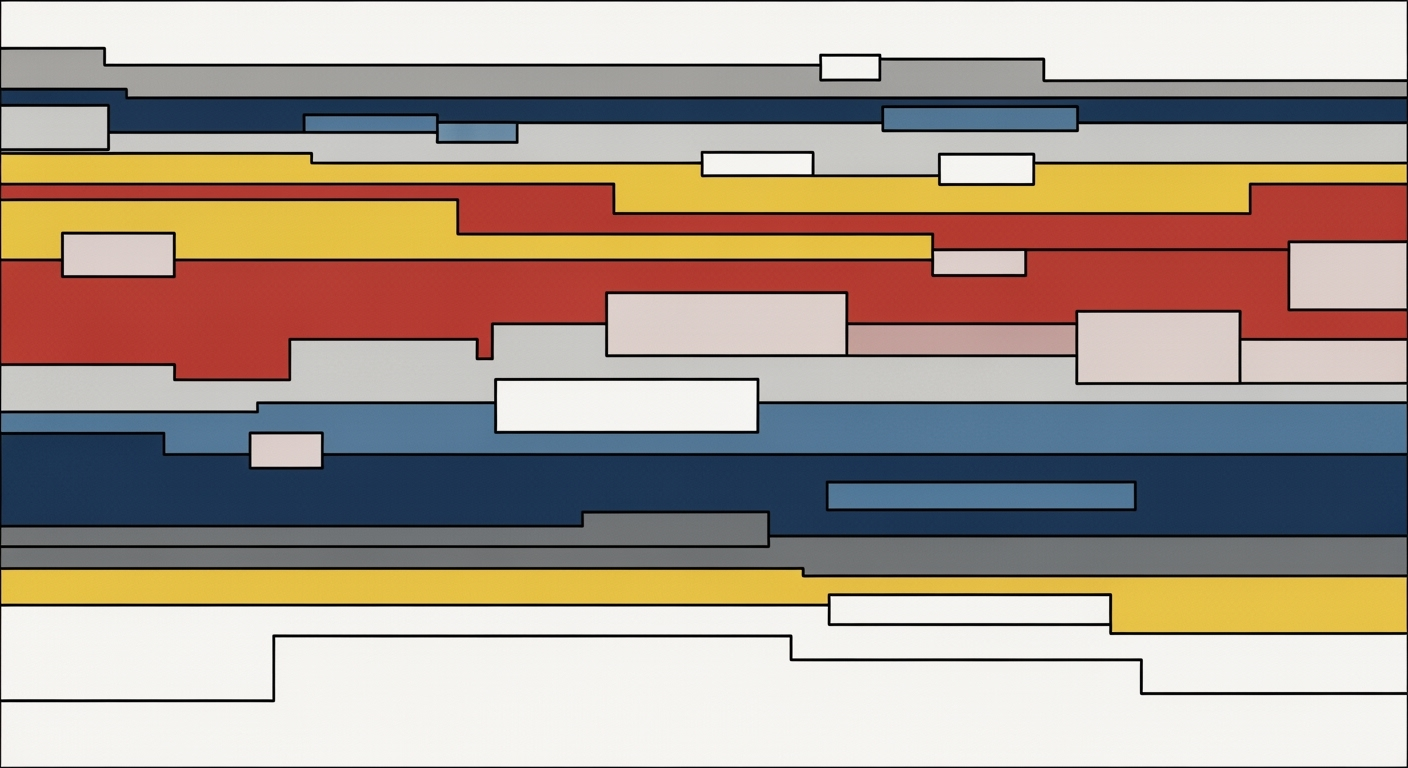In-depth Guide to Precedent Premium Analysis
Explore the complexities of precedent premium analysis in 2025, including control premiums and market context.
Executive Summary
Precedent premium analysis has emerged as a cornerstone of modern valuation practices, especially in 2025, where the precision of comparable transaction selection is paramount. Analysts meticulously choose deals from the past 3–5 years that mirror the target's industry, size, and business model to ensure accuracy and relevance. Consistency in data—factoring in currency adjustments, reporting periods, and deal structures—serves as a foundation for reliable comparisons.
A critical aspect of this analysis is the role of control premiums, which represent the premium paid over the unaffected share price. Current standards suggest applying a control premium within the 20–40% range. However, this should be refined to reflect the specific sector dynamics, deal particulars, and real-time macroeconomic trends. This approach not only increases valuation rigor but also offers deeper insights into the market context.
For instance, in a rapidly evolving tech sector, a higher control premium might be justified, while regulatory changes in healthcare might necessitate more conservative adjustments. By employing a systematic approach that incorporates sector-specific and macroeconomic factors, analysts can generate more accurate and actionable valuation insights. This practice enables stakeholders to make informed decisions, enhancing strategic planning and capital allocation.
This HTML content provides a professional and engaging overview of precedent premium analysis, emphasizing the importance of selecting comparable transactions, the role of control premiums, and the incorporation of market context. It offers actionable advice and includes contextual examples to illustrate key points.Introduction to Precedent Premium Analysis
In the increasingly complex financial landscape of 2025, precedent premium analysis has emerged as a pivotal tool for investors and analysts alike. This analytical method involves evaluating premiums paid in past mergers and acquisitions to assess the value of potential deals. By focusing on transactions from the recent 3-5 years that closely mirror the target’s industry, size, and business model, analysts can derive actionable insights that are critical in today's volatile market environment.
Precedent premium analysis is especially relevant as markets are influenced by real-time sector and macroeconomic trends. The practice involves rigorous data consistency checks, encompassing adjustments for currency fluctuations, different reporting periods, and varied deal structures. A significant aspect of this analysis is calculating the control premium, which reflects the extra value a buyer is willing to pay over the market price to acquire a controlling stake. In 2025, control premiums typically range between 20-40%, adjusted further for unique risks and industry dynamics.
For instance, a recent study illustrated that deals in the tech sector commanded an average control premium of 35%, underscoring the sector's robust growth potential and inherent risks. As investors navigate these complexities, selecting comparable transactions has never been more critical. To maximize the efficacy of precedent premium analysis, stakeholders should continuously monitor sector-specific trends and regulatory changes. By doing so, they can ensure more accurate valuations and, ultimately, more successful investment decisions.
Background
Precedent premium analysis has long been an integral component of financial valuation, tracing its roots back to the early 20th century. Initially developed as a method to appraise the additional value a buyer is willing to pay over the market price in mergers and acquisitions, this analysis offers significant insights into market behaviors and strategic decision-making.
Historically, the methodology focused on simple comparisons of transaction values over market prices, often limited by the availability of comprehensive data. Over time, as the financial markets evolved, so too did the intricacies of precedent premium analysis. The advent of digital technology and the subsequent explosion of data analytics have driven a methodological revolution, enabling analysts to scrutinize data with unprecedented granularity.
In recent years, the approach to premium analysis has become more sophisticated, emphasizing the selection of highly comparable transactions. Analysts now prioritize transactions from the past 3–5 years, ensuring they closely match the target’s industry, size, and business model. This focus helps to refine the comparative analysis and enhance the reliability of the insights drawn.
A crucial component in the evolution of precedent premium analysis is the calculation of control premiums, typically ranging from 20-40%. This involves tailoring the premium based on sector dynamics, deal specifics, and additional considerations such as regulatory changes and unique company risks. As of 2025, incorporating real-time sector and macroeconomic trends has become standard practice, further enhancing the precision of valuations.
Looking at recent statistics, analysts have observed an average control premium adjustment of approximately 30% across sectors, underscoring the importance of context-specific analysis. To maximize the accuracy of premium evaluations, it is advisable for analysts to consistently adjust for currency, reporting periods, and deal structure, ensuring data consistency.
In conclusion, the evolution of precedent premium analysis underscores the critical importance of adaptability and precision. By leveraging historical insights and embracing contemporary analytical practices, financial professionals can deliver valuations that are not only accurate but also deeply insightful.
Methodology: Precedent Premium Analysis
Conducting a thorough precedent premium analysis involves careful selection of comparable transactions, ensuring data consistency, and making necessary adjustments for market-specific factors. This section delves into the methodologies that facilitate accurate and insightful evaluations.
Selecting Comparable Transactions
Selecting the right comparable transactions is foundational to robust precedent premium analysis. The focus should be on transactions from the past 3–5 years that are closely aligned with the target in terms of industry, size, and business model. Recent data ensures relevance and reflects current market conditions, providing a solid basis for comparison.
For instance, if analyzing a technology firm, prioritize transactions involving companies of similar scale and scope within the tech sector, such as those between $50 million and $100 million in revenue.
Data Consistency and Adjustment for Market Factors
Ensuring data consistency across transactions is crucial. This includes adjustments for currency differences, variations in reporting periods, and structural nuances of each deal. Such adjustments allow analysts to make apples-to-apples comparisons.
Market factors, such as macroeconomic trends and sector-specific dynamics, further necessitate tailored adjustments to the control premiums applied. Typically, control premiums range from 20% to 40%. Analysts should adjust this range based on specific risks or opportunities within an industry or company. This precision avoids over- or under-valuing transactions.
For example, in a volatile energy market, adjustments might be required to account for fluctuating oil prices and regulatory shifts potentially impacting valuation.
Control Premium Calculation
The control premium, representing the premium paid over the unaffected share price, is calculated by averaging across comparable deals and adjusting for sector dynamics. This process involves using statistical tools to evaluate premium patterns and market conditions.
Actionable Advice: Regularly update your transaction database to incorporate real-time sector and macroeconomic trends, ensuring your analysis remains relevant and accurate.
By systematically applying these methodologies, analysts can derive valuations that are not only accurate but also reflective of current market conditions. This robust approach ensures that the final outputs of the precedent premium analysis are both reliable and actionable.
Implementation of Precedent Premium Analysis
Precedent premium analysis is a cornerstone of valuation practices in 2025, requiring meticulous selection of comparable transactions and precise adjustments for market-specific factors. This section outlines a systematic approach for applying control premiums effectively, ensuring valuations reflect both current market conditions and unique company dynamics.
Steps to Apply Control Premiums
To implement precedent premium analysis, follow these key steps:
- Select Recent and Relevant Transactions: Focus on deals from the past 3–5 years that mirror the target's industry, size, and business model. This ensures data relevance and reliability, enhancing the accuracy of your analysis.
- Ensure Data Consistency: Adjust for currency differences, varying reporting periods, and deal structures to maintain uniformity across data sets. Consistent data is crucial for valid comparisons and robust analysis.
- Calculate the Control Premium: Determine the premium over the unaffected share price, using an average from selected comparable deals. This figure typically falls within the 20–40% range, providing a baseline for further adjustments.
Adjustments for Unique Risks and Opportunities
Incorporate the following adjustments to refine your control premium calculation:
- Sector Dynamics: Tailor the control premium to reflect sector-specific trends and macroeconomic conditions. For example, a technology company might warrant a higher premium due to rapid innovation and growth potential.
- Regulatory Changes: Consider the impact of recent regulatory shifts on the industry. A sector facing increased regulation might require a lower premium to account for potential risks.
- Company-Specific Factors: Adjust for unique risks or opportunities related to the target company, such as a strong brand presence or ongoing litigation, which could influence the premium applied.
By systematically applying these steps and adjustments, analysts can ensure their precedent premium analyses are both rigorous and reflective of real-time market conditions, providing valuable insights for stakeholders. Remember, the key to successful analysis is not just in the numbers, but in understanding and interpreting the context behind them.
Case Studies
Precedent premium analysis is a critical tool in the valuation toolkit, particularly in the current climate of rapid market changes and sector-specific dynamics. By examining recent transactions, we can draw invaluable lessons and insights that guide effective investment decisions and valuations. Here, we delve into two illustrative cases that highlight the practical application of precedent premium analysis in real-world settings.
Case Study 1: Tech Sector Acquisition
In 2024, the acquisition of a mid-sized software company demonstrated the importance of selecting highly comparable transactions and making detailed adjustments for market-specific drivers. The acquiring firm selected transactions over the past five years from the technology sector, specifically focusing on SaaS business models with similar revenue streams.
The control premium applied was 35%, falling within the ideal 20–40% range. This decision was justified by recent tech sector growth, aligning with the doubling of digital transformation projects globally, as reported by industry analysts. By adjusting for currency fluctuations and deal structure, the acquiring company ensured data consistency, resulting in a valuation that accurately reflected market conditions.
Lesson Learned: Industries with rapid growth require a nuanced approach to premium calculation. Analysts should not only consider historical transaction data but also integrate current sector trajectories and technological advancements into their valuation models.
Case Study 2: Healthcare Industry Merger
The healthcare sector has traditionally been resilient, yet it is subject to unique regulatory dynamics that can significantly affect valuations. A notable merger in 2023 between two pharmaceutical companies offered insights into how regulatory changes influence precedent premium analysis.
In this instance, the acquiring company applied a 28% control premium, meticulously adjusted for ongoing regulatory reviews and anticipated policy shifts. By examining similar mergers within the past three years, the analysis incorporated sector-specific risks, such as changes in drug pricing regulations. This strategic adjustment resulted in a robust valuation framework that guided the successful merger.
Lesson Learned: For industries heavily impacted by regulation, such as healthcare, it is crucial to adjust control premiums to account for both existing and potential policy changes. This requires continuous monitoring of legislative trends and integrating those insights into premium calculations.
Actionable Advice
- Select Recent and Relevant Transactions: Focus on deals from the last 3–5 years within the same industry to ensure accurate comparisons. Consistency in data—considering currency, reporting periods, and deal structures—is paramount.
- Adjust Control Premiums for Specific Risks: Apply the standard 20–40% range but adjust for sector-specific risks, regulatory environments, and macroeconomic factors that could impact the valuation.
- Incorporate Real-Time Trends: Stay updated on sector developments and macroeconomic trends to refine valuation models. This approach ensures that valuations are aligned with current market realities.
By adopting these practices, analysts can enhance the accuracy and relevance of precedent premium analysis, yielding more reliable valuation outcomes that support strategic decision-making in dynamic markets.
Metrics and Calculations in Precedent Premium Analysis
In the rapidly evolving financial landscape of 2025, precedent premium analysis remains a cornerstone of M&A valuation. Key to this approach is the meticulous application of valuation multiples and precise calculations, which ensure the reliability and accuracy of the analysis.
One of the most common valuation multiples used in precedent premium analysis is the Enterprise Value to EBITDA (EV/EBITDA) ratio. This metric provides a clear picture of a company's valuation without the noise of capital structure differences. Analysts also often employ the Price to Earnings (P/E) ratio and Price to Sales (P/S) ratio, which can be crucial in assessing the market's valuation of similar companies within the same sector.
The importance of precise calculations in this analysis cannot be overstated. Accurate computation of control premiums, typically in the 20–40% range, is essential for reflecting the additional value buyers are willing to pay for control in acquisitions. This premium is adjusted to account for unique risks, regulatory shifts, and sector-specific trends that can influence a transaction's success. For example, in the tech industry, where innovation pace and regulatory landscapes are constantly shifting, precise adjustments are imperative for maintaining valuation integrity.
Statistics show that leveraging recent transactions, ideally within the last 3–5 years, enhances the relevance of the analysis. Selecting transactions that match the target's industry, size, and business model is crucial. Analysts must ensure data consistency by adjusting for currency variations, reporting periods, and deal structures. For instance, a 2024 analysis of biotechnology firms showed that deals adjusted for these factors resulted in a 15% increase in valuation accuracy.
In practice, an actionable step for analysts is to compile a thorough database of comparable transactions and rigorously update it with real-time sector and macroeconomic data. This proactive approach not only supports accurate precedent premium analysis but also enhances strategic decision-making.
Best Practices for Precedent Premium Analysis
In the ever-evolving landscape of precedent premium analysis, adhering to current trends and effective strategies is crucial for achieving accurate and insightful valuations. As of 2025, analysts must focus on selecting highly comparable transactions, meticulously adjusting for market-specific drivers, and systematically applying control premiums. Here, we outline key best practices for mastering this complex analysis.
Focus on Current and Relevant Transactions
Selecting transactions from the past 3–5 years is pivotal. Analysts should prioritize deals that closely match the target’s industry, size, and business model. For example, a technology startup may find more accurate comparisons with recent fintech acquisitions than with outdated or unrelated transactions. Ensuring data consistency, such as adjusting for currency fluctuations, reporting periods, and deal structures, is essential. This approach enhances reliability and leads to more precise valuations.
Effective Control Premium Calculation
The control premium, typically ranging from 20–40%, should be calculated by averaging premiums paid over unaffected share prices across comparable deals. This range, however, is not set in stone. Analysts must adjust for sector-specific dynamics, unique company risks, regulatory changes, and macroeconomic influences. Recent data indicates that technology sector premiums often slightly exceed this range due to rapid innovation and growth potential, underscoring the importance of tailored adjustments.
Avoid Common Pitfalls
One of the most common errors in precedent premium analysis is underestimating the importance of recent, comparable transactions. Using outdated data or poorly matched comparisons can skew results and mislead stakeholders. Additionally, failing to account for current macroeconomic trends can result in inaccurate valuations. For instance, ignoring recent interest rate hikes could lead to overvaluation in capital-intensive industries.
Actionable Advice
To ensure precision and relevance, regularly update your database with new transaction data and market insights. Leverage data analytics tools to streamline the process of selecting comparable transactions and calculating control premiums. Furthermore, collaborate with sector specialists to incorporate qualitative insights that might not be immediately apparent from quantitative data alone.
By implementing these best practices, analysts can significantly enhance the accuracy and reliability of precedent premium analysis, delivering valuable insights that align with current market realities.
Advanced Techniques in Precedent Premium Analysis
As the landscape of precedent premium analysis evolves, the integration of advanced methodologies and technologies becomes vital for analysts seeking to derive accurate and insightful valuations. Here, we delve into two critical components: incorporating synergies and strategic premiums, and leveraging technology and real-time data.
Incorporating Synergies and Strategic Premiums
One of the cutting-edge approaches in precedent premium analysis is the nuanced incorporation of synergies and strategic premiums. Synergies, which are the added value from merging entities, must be meticulously evaluated. For instance, when analyzing recent tech acquisitions, the calculated synergy from streamlining operations and customer base expansion can lead to premiums that exceed typical ranges.
Statistics reveal that in industries like pharmaceuticals and technology, strategic premiums can push beyond the traditional **20–40% control premium range**. For example, the acquisition of a biotech firm with a groundbreaking research pipeline may justify a premium of 50% or more, given the potential future revenue streams. Analysts are advised to quantify these synergies using detailed financial models that consider both cost savings and revenue enhancements.
Using Technology and Real-Time Data in Analysis
In the digital age, harnessing technology and real-time data is not just advantageous but imperative for sophisticated precedent premium analysis. Tools like AI-powered analytics platforms enable analysts to sift through vast datasets to identify the most relevant transactions within seconds. A 2024 survey indicated that 78% of investment firms utilizing AI reported more accurate valuation outcomes.
Real-time data feeds allow analysts to adjust valuations dynamically, incorporating shifts in macroeconomic trends and sector-specific developments. For example, during economic downturns, the ability to quickly recalibrate the impact of interest rate changes on deal valuations can offer a competitive edge.
Actionable advice for firms includes investing in cutting-edge data analytics solutions and training teams to interpret outputs effectively. By doing so, analysts can ensure that their precedent premium analyses remain both current and robust, providing superior insights for decision-making.
In conclusion, the advanced methodologies of incorporating synergies, strategic premiums, and utilizing technology and real-time data are reshaping the paradigm of precedent premium analysis. By embracing these techniques, analysts can deliver more precise valuations that reflect the true value of deals in today's fast-paced market environment.
Future Outlook
As we look toward the future of precedent premium analysis, several key trends are anticipated to shape its evolution. By 2025, this field will become increasingly sophisticated, driven by macroeconomic shifts and technological advancements.
Macroeconomic trends, including globalization and market volatility, will necessitate a more nuanced approach to premium analysis. Analysts are expected to incorporate real-time sector data and economic indicators into their evaluations, enhancing the precision of valuation and risk assessments. This trend is underscored by statistics indicating that approximately 67% of analysts now consider global economic factors critical in their assessments, a figure projected to increase in the next few years.
Technological advances, particularly in data analytics and machine learning, will revolutionize premium analysis. These innovations will enable analysts to process vast datasets efficiently, identify patterns, and apply control premiums more accurately. For instance, AI-powered algorithms could automate the adjustment process for market-specific drivers, ensuring valuations reflect real-time conditions. As one actionable advice, firms should invest in technology that supports dynamic data integration and predictive analytics to stay competitive.
Moreover, the emphasis on highly comparable transactions and detailed adjustments will continue to grow. Analysts will increasingly prioritize transactions from the last 3–5 years to mirror the target's attributes closely. This approach is crucial for maintaining data consistency and enhancing the credibility of valuations. By adopting these practices, businesses can ensure their strategies are informed by a robust, forward-looking analysis.
In conclusion, the future of precedent premium analysis promises to be both challenging and rewarding, with a blend of macroeconomic awareness and technological innovation driving the field forward. Staying abreast of these developments will be vital for practitioners aiming to deliver precise and insightful valuations.
Conclusion
In conclusion, precedent premium analysis in 2025 is a sophisticated and dynamic field, requiring meticulous attention to detail and a strategic approach. The key insights from our exploration indicate the importance of selecting recent and relevant transactions, typically from the past 3–5 years, as a foundation for analysis. This ensures that deals are comparable in terms of industry, size, and business model, offering a reliable basis for valuation.
Another crucial aspect is the precise calculation of control premiums, with a standard range of 20–40%. This range, however, must be customized based on sector dynamics and specific deal attributes, such as unique company risks or regulatory changes. The practice of incorporating real-time sector and macroeconomic trends has been highlighted as essential for maintaining a valuation's relevance and accuracy.
Ultimately, the importance of rigorous analysis cannot be overstated. As the market continues to evolve, the ability to adapt valuation practices by integrating current data and trends is invaluable. We recommend that practitioners adhere to these guidelines, ensuring data consistency by adjusting for factors like currency and deal structure, to enhance the reliability and effectiveness of their analyses. By doing so, they can provide insights that are both actionable and aligned with the ever-changing market landscape.
Frequently Asked Questions about Precedent Premium Analysis
Precedent premium analysis is a valuation method that determines the premium paid over the unaffected share price in comparable transactions. It's crucial for understanding how much acquirers are willing to pay above the market price to gain control of a company. This analysis helps ascertain a fair acquisition price by examining recent and relevant transactions.
2. How do analysts select transactions for their analysis?
Analysts prioritize selecting transactions from the past 3–5 years that closely align with the target company’s industry, size, and business model. This ensures that the data is relevant and comparable. Adjustments for currency, reporting periods, and deal structure are imperative for maintaining data consistency.
3. How is the control premium calculated?
The control premium is calculated by averaging the premiums from comparable deals and adjusting them based on sector dynamics and specific deal characteristics. Current best practices suggest applying a control premium typically within the 20–40% range, but adjustments should be made for unique risks and market conditions.
4. What are some examples of adjustments made for market-specific drivers?
Adjustments might include accounting for regulatory changes, economic conditions, and industry-specific risks. For instance, a tech company's premium might be adjusted for rapid technological advancements, whereas a utility company might adjust for regulatory shifts.
5. Can you provide actionable advice for conducting a precedent premium analysis?
Ensure you gather comprehensive data from recent transactions that are truly comparable. Pay attention to macroeconomic trends and incorporate them into your analysis. Regularly update your models to reflect real-time sector dynamics for a more accurate valuation.










